Why is the stiffness of a frame so important?
When a manufacturer launches a new bike model, there are often repeated claims of improved stiffness, weight, comfort or aerodynamics. Among these parameters, stiffness is the most emphasized, a key factor when it comes to making a bike as efficient as possible. However, it is a parameter that hides many nuances behind it.
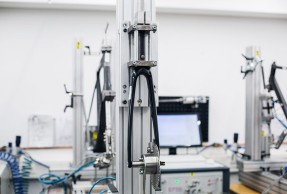
Stiffness or the art of making the bike behave exactly as desired
When manufacturers present their arguments to sell the qualities of their new bikes, the reference to increased stiffness is always present, a parameter that many talk about but few understand its implications. However, as happens with the weight of bikes, it is too often overestimated when large stiffness figures do not always make a bike better.
What is stiffness
Before starting to analyze the implications of this parameter, the first thing to do is to clarify what stiffness is. According to the definition commonly used in engineering, stiffness is the ability of a structural element, in the case of the bike the frame, to resist deformation caused by the application of a force.
RECOMENDADO

Which profile wheels to choose according to the area where you live: mountain, flat or coast

How to wash your cycling clothes? 10 keys to make them always look new

Cycling can help you fight the effects of the time switch

Tips for cycling in the rain
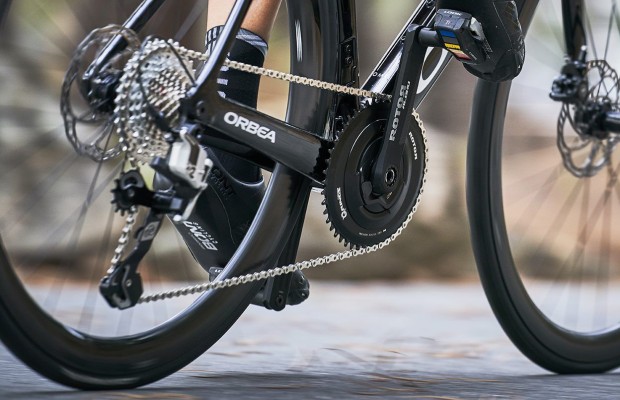
Important keys to make your training work

Easy to apply tips for riding faster
That's why when we talk about stiffness, most people immediately think of the force we apply to the pedals and how much the frame deforms laterally with each pedal stroke.
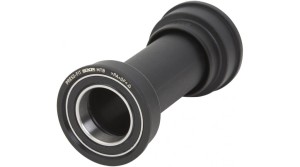
However, this is only one of the forces affecting the frame, and other forces such as the effect of centrifugal force when cornering or the reaction to impact with bumps and other irregularities encountered on the road are often not taken into account.
All these aspects have to be taken into account by the engineers who develop the bicycles in order to provide the bikes not only with stiffness but also with a correct absorption capacity while trying to make the set as light as possible.
Therefore, when talking about the stiffness of a frame we have to evaluate it in different areas of the frame where one or the other will be of more interest.
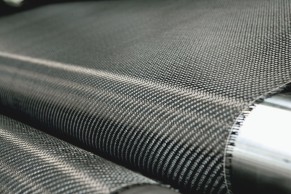
Basically, achieving the highest possible stiffness should not be a problem. Simply by adding material, especially if this material has a lower elongation capacity, a more robust structure is achieved. Apart from the material, the cross-section of the tubes is also important. The larger the cross-section, the greater the stiffness. The problem is that this leads to an undesirable increase in weight.
The arrangement of the carbon fibers is essential here. Currently, unidirectional fibers are used, which are characterized by high stiffness in the direction in which the fibers are arranged but very little in the direction perpendicular to the fibers. This gives engineers the possibility of achieving the desired behavior in each area of the frame depending on how each fiber sheet is positioned.
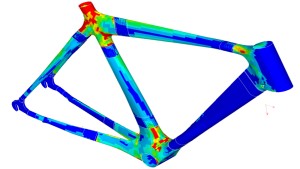
A huge calculation work that fortunately, today falls largely on powerful computers through the use of Finite Element Analysis software or FEA, with which you can generate hundreds of virtual frames and simulate the response they would have to the application of different forces.
The objective is therefore to achieve a balance and to add stiffness only where it is important to have it. For this purpose we define several types of stiffness in a bike frame.
Unperturbed by pedaling
First of all we have the one that is usually the most taken into account, the lateral stiffness, which manufacturers measure in their laboratories by applying a load on the bottom bracket that simulates the force exerted by pedaling. This stiffness measures how much this area deforms each time our legs press the cranks and it is interesting that it is high because by minimizing the lateral displacement we make the resulting vector a transmission of the greatest amount of that force to the rear wheel.
In addition, the rear triangle must also be stiff so as not to deform when receiving the forces that reach it through the chain.

It's a parameter that those of us who test bikes try to assess how easy the bike is to accelerate suddenly, a quality especially valued by climbers and sprinters who require the bike to hold its own when they launch an attack or face a mass finish. However, at cruising paces, with more modest power figures like those generated by us mortals, most of today's frames have more than enough value for efficient pedaling.
To achieve this, manufacturers have been opting for wider bottom brackets and cranksets with 30 mm axles. The chainstays are also usually oversized, especially in their lateral section, although taking into account that the wheel arch is not affected. All this is topped off with asymmetric designs of the area to equalize the response to the different forces generated on the drive side and on the opposite side; and an arrangement of the carbon fiber layers that maximizes these qualities.
Accurate driving
Even more important, and less taken into account, is the torsional stiffness. This defines how much the frame twists under different forces. A torsion that affects the alignment of both wheels and therefore has a clear impact on the handling of the bike, especially when cornering.
When cornering at high speed, the bike applies centripetal force towards the inside of the curve which has as a resultant a centrifugal force that we perceive as wanting to push us to the outside of the curve. This force is not equal on each wheel due to the structural differences between the fork and the rear triangle which causes a misalignment of the wheels along the line.

On the bike we perceive this in the form of inaccuracy. When with a bike you draw a curve and you have to make constant corrections to maintain the chosen line, the bike is not as stiff as you would like it to be in this aspect. On the contrary, when a bike excels in this parameter it is very easy not only to draw the curve, where with a single gesture you tilt the bike progressively to the apex to recover after the same verticality with the same progressivity, but also in the changes of direction when linking curves, resulting much faster and easier this gesture without the laziness of less solid models.
In order to keep the bike from twisting, the manufacturers especially reinforce the fork legs and opt for oversized headpipes, in fact the bearings have been growing from the traditional 1 inch to the current 1.5 inch bearings that can be seen in the lower bearing. It is also the reason why the down tube of the bikes is the one with the most generous section as it becomes the main support for the frame structure.
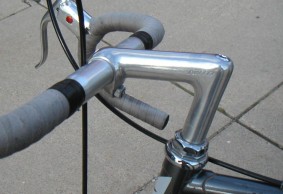
But there is still another aspect to take into account. Lateral and torsional stiffness must be in balance with each other for the frame to perform optimally without decompensation. On the other hand, too much lateral stiffness in the axles can make the bike difficult to ride when the asphalt is not perfect as it bounces with every impact. As you can see, there are many parameters to take into account.
Vertical stiffness
If in the previous points the aim was to achieve maximum stiffness, it turns out that in the vertical plane the aim is precisely the opposite: to achieve sufficient stiffness so as not to cause a bouncing effect but, at the same time, to have sufficient bending capacity to attenuate the irregularities of the terrain.
An extremely difficult parameter to adjust because it is influenced by the rider's weight and, of course, bikes are made for a very different range of riders. Clearly, statistical studies of the physiognomies of those who ride bikes allow an estimate of what the average rider who uses each of the sizes looks like, allowing the engineer to more accurately adjust this parameter.
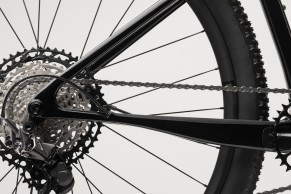
In any case, here, as with lateral stiffness, the section of the tubes as well as the arrangement of the fibers has a clear influence, seeking to achieve a perfect balance between the absorption capacity of the bike without compromising lateral stiffness.
An aspect that has traditionally affected aerodynamic bikes, as the profiled tubes themselves offer elongated sections in the direction of travel that increase vertical stiffness, and flattened laterally, which impairs lateral stiffness, just the opposite of what is sought.
The solution to this dilemma has come from the use of truncated profile tubes and a clear increase in the lateral sections of the tubes, which, on the other hand, also has implications not only on weight but also on aerodynamic performance.
What if a bike is too stiff or too flexible?
As we said at the beginning, making a bike extremely stiff is a simple task with today's materials and if only that mattered. However, few of us would last more than an hour on such a bike, not only because of the irregularities of the terrain that would quickly crush our arms and back, but also because of the excessive speed of reactions to any slightest gesture that forces us to maintain constant tension.
In fact, on some occasions we have come across bikes with these characteristics that, although they amaze you in the first pedal strokes, especially when accelerating, you soon discover that they are not practical for the real world when everything hurts as the kilometers go by or going down a mountain pass becomes a constant battle in every curve that brings anything but confidence. Who does not remember the aluminum racing bikes that were used at the beginning of the century? Real beams with wheels.

At the other extreme, we have also come across bikes that we have ended up calling bubblegum. Bikes on which you have to constantly do your best to maintain a high cruising speed and on which you feel that half of your pedal strokes are lost in the void, not to mention the laziness they show when you try to accelerate.
This type of bike also brings to mind the memory of the constant struggle with the steering to maintain the chosen line, something that anyone who has a classic steel bike of medium quality, which there are real works of art made of this material that behave luxuriously, surely knows what we mean.
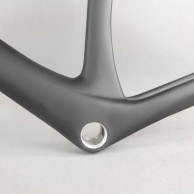
From all this we deduce that stiffness is welcome in most cases, but always in the right measure in each area of the frame and looking for the perfect balance between parameters. All in all, the general stiffness of frames has been clearly increasing over the years and it only takes a few pedal strokes on a latest generation model followed by as many pedal strokes on a model, for example, from about ten years ago, to clearly perceive how the increased knowledge, design tools and quality of materials have affected the behavior of bicycles.